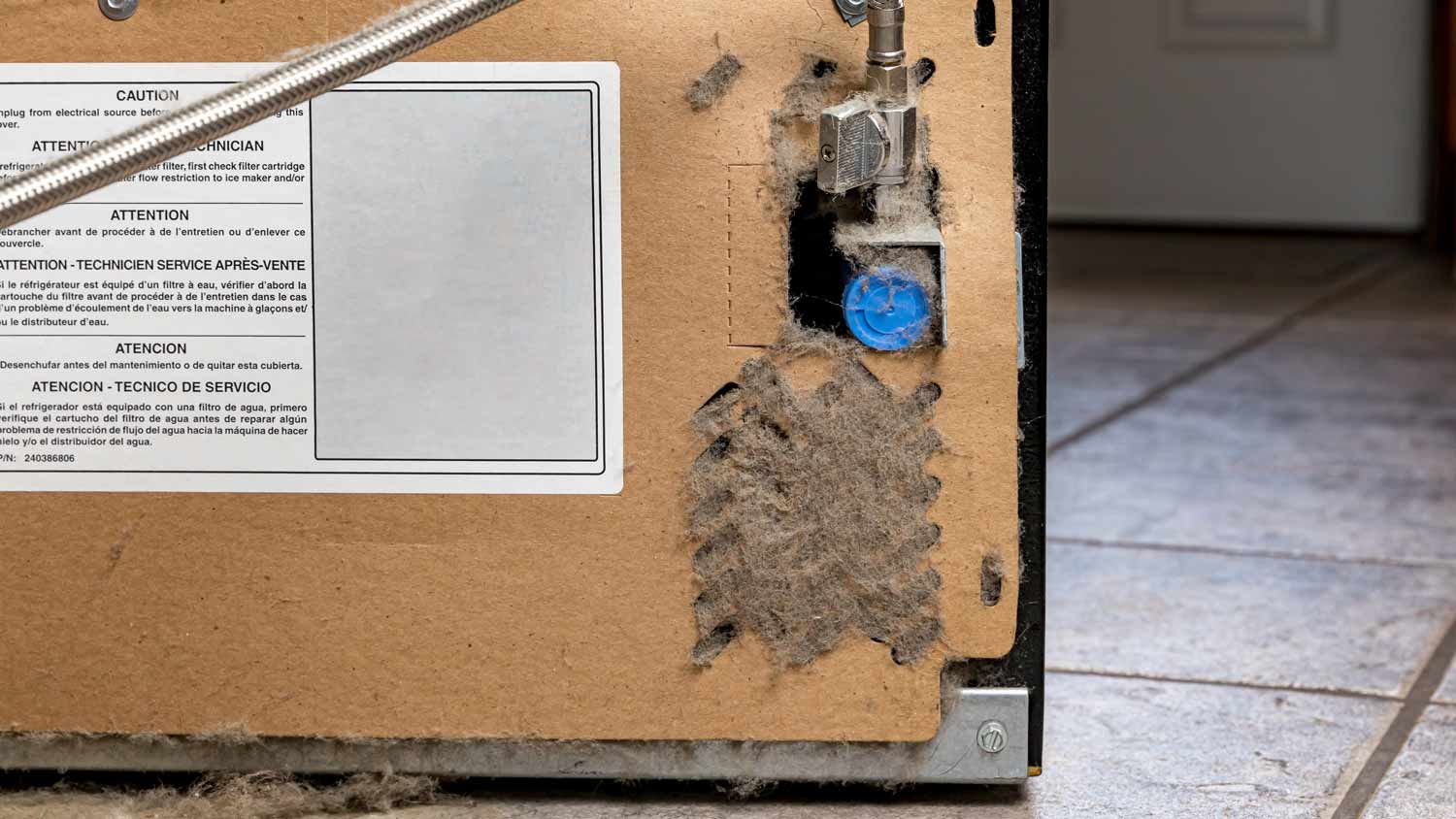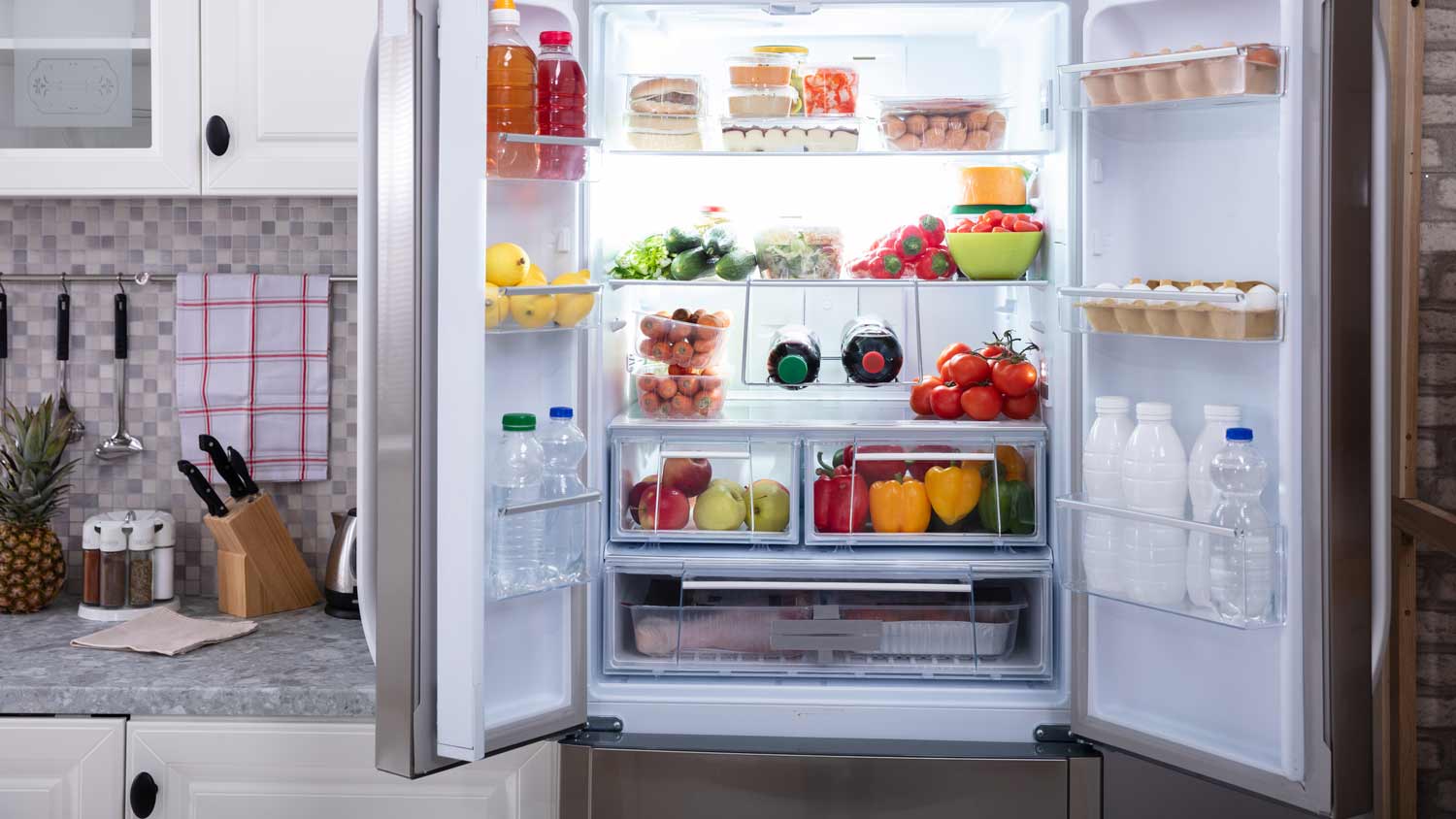
Discover the average dishwasher installation cost, key price factors, and tips to save on your project. Get transparent, expert-backed estimates.
Refrigerator running? Here’s how to catch it


A faulty door gasket can cause cold air to escape from the fridge.
Clean dirty condenser coils once or twice per year.
Make sure the temperature is set between 35 and 38 degrees Fahrenheit.
If you notice that your refrigerator never stops running, then you’ll want to address the problem as soon as possible. If left unchecked, the fridge will continue to work harder than it needs to, which can decrease its life span and reduce its efficiency. Use this guide to learn why your refrigerator is running continuously and how to fix it.
Refrigerator repairs can be complicated and hazardous to one's health. If you don't have prior experience with this project, contact a local pro to ensure the job is completed safely.
The door gasket is the rubber strip around the edge of the refrigerator door. When it works, this part of the refrigerator should create an airtight seal to prevent cold air from escaping, but if it’s broken or there’s too much debris buildup, it can affect your refrigerator’s efficiency and cause it to run constantly.
A quick way to see if you may have a gasket problem is to close the door on a piece of paper. If you can easily pull out the piece of paper, then your gasket likely doesn’t have a tight enough seal. A working gasket will create friction when you try to pull out the paper. You should also inspect the gasket for any cracks, tears, and debris buildup, all of which can affect how well it seals. If you notice any problems, you’ll likely need to remove the old gasket and install a new one.

If the condenser coils are dirty, they can’t release enough heat, which can cause the refrigerator to run continuously to maintain the desired temperature. Start by inspecting the coils for dirt and debris. They’re typically located behind or beneath the refrigerator. If they look dirty, unplug the refrigerator, then use a vacuum cleaner with a brush attachment or a coil brush to gently clean the coils, removing any dust and debris. Ideally, you should complete this process once or twice per year to maintain your refrigerator.
Located near the condenser coils, the condenser fan cools the coils, so if it fails, the coils can’t effectively release heat, causing the refrigerator to run. If you suspect this is your problem, unplug your refrigerator and inspect the motor for obstructions or dirt. Clean any dirt and debris around the blades. If the fan still doesn’t work, you’ll probably need to replace it. It’s a good idea to call a refrigerator repair pro to handle this for you. Refrigerator repair costs range from $200 to $300, on average.
The evaporator fan circulates cold air throughout the refrigerator. If it’s broken, your fridge can’t properly distribute the air, causing it to run constantly to cool down. The evaporator fan is typically located inside the freezer behind the back panel. Unplug your refrigerator and inspect the fan for obstructions or ice buildup on the blades. If it’s dirty, clean it with a soft cloth. If that doesn’t fix the problem, you may need a new fan.

If you open your refrigerator door a lot, it needs to work harder to maintain the interior temperature. The fix for this problem is to reduce how many times you open the door each day. Consider planning what you need to get beforehand to reduce the amount of time the door needs to be open. You may also want to put childproof measures in place to prevent any children from continuously opening the door.
If your refrigerator temperature is too low, the fridge must work very hard to maintain the cold setting. Check your temperature settings and ensure they’re set between 35 and 38 degrees Fahrenheit. If they fall outside of that range, adjust them using the control panel inside or outside of the fridge.
Packing your fridge to the brim with food can overload it and obstruct air circulation, making it harder for your refrigerator to maintain the set temperature. To address this, remove excess food and organize the contents with space between items to allow for proper air circulation. You should also make sure items aren’t blocking any vents inside the fridge.
Inadequate ventilation around the refrigerator can cause it to overheat and run continuously. To promote airflow, make sure the back of the refrigerator is at least a few inches away from the wall and that there’s some space around the sides and the top of the refrigerator. This can also help to clean dust and debris buildup on and around the refrigerator.
Low refrigerant levels make it harder for your fridge to maintain the desired temperature, causing it to run constantly. Refrigerant inspections and refills should only be done by a professional repair technician, as they require specialized equipment and knowledge. So if you suspect that this is your problem, call a pro to help.
If your refrigerator is located too close to hot appliances that run often, like a dishwasher or oven, it may need to run more to compensate for the extra heat around it since hot appliances increase the ambient temperature. You can address this by moving the refrigerator or adding some kind of barrier between the refrigerator and the hot appliances to reduce heat transfer.
The higher your home’s temperature, the harder your refrigerator needs to work to maintain its interior temperature. Try lowering the room temperature and ensuring that the fridge isn’t exposed to direct sunlight.
From average costs to expert advice, get all the answers you need to get your job done.

Discover the average dishwasher installation cost, key price factors, and tips to save on your project. Get transparent, expert-backed estimates.

Dryer repair costs as little as $10, but sometimes, replacing your dryer is more cost-effective. But if you have to make repairs, here’s how much it’ll cost.

Get expert insights on dishwasher repair cost, including average prices, key cost factors, and tips to save money on repairs.

How do wood stove fans work, and why do you need one? Learn how to boost your home’s heating efficiency with our comprehensive guide.

Learning how to determine washer box height in your laundry room will come in handy when you need to access your washer connections.

Whether a small or deep scratch, follow these simple steps to remove scratches from stainless steel to keep your appliances shining.